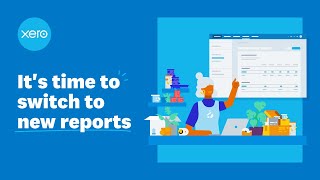With money flying around in all directions (and out the door faster than ever), it’s essential to have a financial budget for your business. Without something in place, you can potentially find yourself in debt to suppliers, with a tax bill you’re not able to pay or in trouble because you have failed to keep up with your PAYG and super obligations to your staff.
The start of a new financial year is the ideal time to review and update your budget. With many suppliers changing their prices as of July 1st, this task is more important than ever.
If you have never put together a formal business budget or if it has been some time since you took a good look at yours, here are some tips to get you started:
What is a business budget?
A budget is a plan that helps you track your income and expenses so you can stay on track financially. Creating a budget for your business will help you make better spending decisions and avoid debt.
In a perfect world, your budget will include all your expenses as well as some ‘breathing room’ for extras, and you will always spend within your limits. However, the reality is that costs and requirements can change on an almost daily basis, especially in a post-pandemic world. This is why you need to pay attention to your budget and review your plans against the reality of your spending regularly.
When you build a business budget, it is likely to include the following:
– Estimates of future sales and cash flow
– Estimates of future expenses
– Estimates of loan repayments and capital expenditure
– Estimates of staffing costs
In accounting terminology, a budget is reviewed with the help of a profit and loss statement, balance sheet and a cash flow statement.
Budget categories
‘Expenses’ is a big label to use in your budget and you will need to break them down.
For example, your business will have lines on its budget for all or some of the following:
– Stock and inventory
– Storage
– Marketing
– Financial management
– Rent
– Utilities
– Vehicles
– Office supplies
– Equipment and machinery
– Staff and contractors
It’s important to think carefully about which categories are most relevant to your business and which ones you need to allocate the most money to. For example, if you’re a retailer, inventory is likely to be a key budget category and you will have to keep a close eye on how your spending compares to your sales. On the other hand, if you’re a service-based business, marketing may be more important (and you’ll need to track how effective it is to know whether you should expand or reduce this budget).
There’s no one-size-fits-all answer when it comes to building a budget for your business. The funds you allocate to different areas will depend on your profit and your strategy. If you’re pursuing growth, for example, you may decide to make equipment purchases a priority and create room in your budget to pay off an asset loan.
You may find you need to do some forecasting before you set your budget, so you can get a clear idea of what you expect to earn as well as how much you will spend. Take a look at our recent article about forecasting here.
How to review your budget
Creating a budget is one thing. Reviewing it regularly is the next very important step, especially in an economy with rising inflation. As mentioned, your expenses will change and you need to make sure expenditure is not exceeding what you know the business can afford.
When you conduct a review, you’ll look into the following:
– Income: This is the money coming into your business from sales, investments, and other sources.
– Expenses: This is the money going out of your business to cover costs like rent, inventory, payroll, and marketing.
– Profit: This is the difference between your income and your expenses. We have put together a guide to help you understand what profit is and to learn how to make sure your business remains profitable, no matter what.
– Cash flow: This is a measure of how much cash is coming in and going out of your business each month. Read more about how to manage your small business cash flow effectively and accurately here.
– Break-even point: This is the level of sales at which your business covers its expenses and begins to make a profit.
Include these elements in your budget to get a complete picture of your business’s financial health. When you conduct your review, you’ll be able to understand what is driving the most sales and where you are losing the most money. If you can optimise your key revenue drivers and take action to reduce costs, the result will be more effective financial management and a better chance of healthy profits.
July is an excellent time of year to get your books in order and create a financial budget for the year ahead. Of course, if you require assistance, we can help create a custom budget for you.
Want help to create an effective business budget? Contact Imagine Accounting today.




